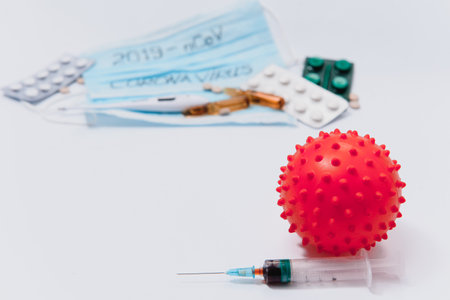1. Introduction and Scope
Electrotherapy modalities have become integral to modern physiotherapy and rehabilitation within the UK, encompassing a range of treatments that utilise electrical energy to promote healing, manage pain, and enhance functional recovery. This overview provides context for the diverse applications of electrotherapy, including transcutaneous electrical nerve stimulation (TENS), ultrasound therapy, interferential current therapy, and neuromuscular electrical stimulation (NMES), among others. As healthcare professionals increasingly incorporate these modalities into patient care, establishing clear clinical guidelines is essential to ensure both efficacy and patient safety. The rationale for developing such guidelines is rooted in the need to standardise practice, minimise risks, and optimise treatment outcomes across varied clinical settings. Given the unique landscape of UK healthcare — characterised by its commitment to evidence-based practice, regulatory oversight, and an emphasis on patient-centred care — these guidelines are particularly pertinent. They provide practitioners with structured recommendations that align with both national health policy and local service delivery frameworks, supporting consistent high-quality care throughout NHS trusts and independent practices alike.
2. Patient Assessment and Contraindications
Thorough patient assessment is a cornerstone of safe and effective electrotherapy practice in the UK. Practitioners must adhere to national guidelines and local trust protocols when evaluating individuals for electrotherapy interventions. The assessment process begins with a detailed medical history, encompassing present complaints, past medical issues, medication use, and relevant lifestyle factors. It is vital to inquire specifically about conditions that may contraindicate electrotherapy modalities, such as cardiac pacemakers or metal implants.
Key Aspects of Patient Evaluation
| Assessment Element | Details |
|---|---|
| Medical History | Review of systemic illnesses, neurological disorders, cardiovascular status, and previous surgeries. |
| Physical Examination | Inspection and palpation of target area, sensory testing, and vascular assessment. |
| Functional Assessment | Evaluation of mobility, strength, pain levels, and impact on daily living activities. |
Identification of Contraindications
The practitioner must be vigilant in identifying both absolute and relative contraindications prior to treatment initiation. The following table summarises common contraindications encountered in UK clinical practice:
| Contraindication Type | Description/Examples |
|---|---|
| Absolute Contraindications | Pacemakers, active malignancy in the treatment area, pregnancy (over abdomen or pelvis), open wounds (unless specified modality permits) |
| Relative Contraindications | Sensory impairment, severe circulatory disorders, skin conditions (eczema, dermatitis), metal implants near treatment site |
Consent Procedures: UK Legal Standards
Obtaining informed consent is a legal requirement under UK law and professional codes of conduct (e.g., HCPC, CSP). Practitioners must ensure patients understand the nature of the proposed electrotherapy modality, its potential benefits and risks, alternative treatments, and the right to withdraw consent at any time. Consent should be documented in accordance with local NHS Trust policy. Where language or capacity barriers exist, appropriate support—such as interpreters or advocacy services—must be arranged.
![]()
3. Safe Application Procedures
Evidence-Based Recommendations for Clinical Practice
The safe application of electrotherapy modalities in UK healthcare environments requires strict adherence to evidence-based protocols. These recommendations ensure patient safety, device efficacy, and compliance with British regulatory standards.
Patient Preparation and Consent
Prior to treatment, clinicians must conduct a comprehensive assessment to confirm suitability for electrotherapy. This includes screening for contraindications such as pacemakers, metal implants, or pregnancy. Informed consent should be obtained, detailing potential risks and expected outcomes in clear, plain English.
Device Set-Up and Calibration
Electrotherapy devices should be routinely checked for electrical safety according to NHS guidelines and the manufacturer’s instructions. Use only CE-marked equipment approved for use in the UK. Electrodes must be clean, intact, and appropriately positioned to avoid skin damage or ineffective treatment.
Treatment Parameters and Monitoring
Select treatment parameters (intensity, duration, frequency) based on current clinical evidence and tailored to each patient’s condition. Start with the lowest effective settings, increasing gradually while closely observing the patient’s comfort and response. Continuous supervision is essential; never leave patients unattended during active stimulation.
Hygiene and Infection Control
Adopt rigorous infection control procedures by using single-use or disinfected electrodes and maintaining clean contact surfaces. Follow Public Health England guidance for hand hygiene before and after handling any equipment or patient.
Documentation and Incident Reporting
Document all aspects of treatment—device type, settings, duration, electrode placement—and report any adverse events via established NHS incident reporting systems. This ensures traceability and supports ongoing quality improvement within British clinical practice.
4. Infection Prevention and Control
Effective infection prevention and control are fundamental in the clinical application of electrotherapy modalities. Adhering to NHS guidelines ensures patient safety and minimises the risk of cross-contamination between patients and practitioners. The following protocols cover hygiene practices, cross-contamination prevention, and equipment maintenance.
Protocols for Hygiene
All clinical staff must observe rigorous hand hygiene before and after patient contact or device handling. Handwashing with soap and water or using an alcohol-based hand rub is mandatory, especially when dealing with wounds or non-intact skin. Single-use gloves should be worn when there is potential contact with bodily fluids or broken skin.
Cross-Contamination Prevention
To prevent the transmission of pathogens in the clinic, strict separation of clean and used equipment is essential. Surfaces that come into direct contact with patients, such as treatment couches and electrode pads, must be cleaned with approved disinfectants between sessions. Below is a summary table outlining key measures:
| Area/Item | Recommended Action | Frequency |
|---|---|---|
| Treatment Couch | Disinfect with NHS-approved solution | Between each patient |
| Electrode Pads (Reusable) | Clean according to manufacturer’s guidelines; inspect for wear | After each use |
| Cables & Leads | Wipe down with alcohol wipes | Daily & when visibly soiled |
| Clinician Hands | Wash/sanitise thoroughly | Before & after every patient contact |
| Single-use Items (e.g., disposable electrodes) | Dispose safely in clinical waste bin | Immediately after use |
Equipment Maintenance in Line with NHS Guidelines
Regular inspection and servicing of electrotherapy devices are required to maintain safety standards. This includes checking for electrical faults, ensuring cables are intact, and calibrating machines as recommended by manufacturers. All maintenance activities should be logged for audit purposes.
Summary of Equipment Maintenance Schedule:
| Maintenance Task | NHS Recommended Frequency |
|---|---|
| Visual Inspection (Cables/Plugs) | Weekly or before each use |
| Functional Testing (Output Check) | Monthly or as per manufacturer guidance |
| Professional Servicing/Calibration | Annually or as required by device type |
| User Training Update Review | Annually or upon introduction of new devices/protocols |
Key Takeaways for UK Clinical Practice:
The integration of robust infection control protocols, supported by regular training and adherence to NHS policies, underpins safe electrotherapy practice within British healthcare settings. By maintaining high standards in hygiene and equipment care, clinicians protect both their patients and themselves from avoidable harm.
5. Monitoring, Documentation, and Audit
Effective monitoring, meticulous documentation, and regular audit are cornerstone practices in the safe use of electrotherapy modalities within UK clinical settings. The National Health Service (NHS) upholds rigorous standards to ensure both patient safety and clinical efficacy.
Approaches to Patient Monitoring
Continuous patient monitoring is essential when administering electrotherapy. Clinicians must observe for any adverse reactions, such as skin irritation or discomfort, throughout each treatment session. It is recommended to communicate with patients regularly during procedures, ensuring they understand how to report unusual sensations or concerns promptly. Additionally, pre- and post-treatment assessments should be standard practice, noting baseline measures and any changes observed following intervention.
Clinical Record-Keeping
Accurate and thorough documentation is a legal requirement under NHS guidelines and the Health and Care Professions Council (HCPC) standards. Records should include details of the modality used, treatment parameters (such as intensity, duration, and electrode placement), rationale for selection, informed consent, and any patient-reported outcomes or side effects. Consistent record-keeping not only supports continuity of care but also protects practitioners in the event of complaint or review.
Regular Audit Practices
Routine auditing forms a critical part of quality assurance in NHS clinical environments. Audits may review compliance with local policies, appropriateness of modality selection, equipment maintenance logs, and adherence to safety protocols. Engaging in regular audit cycles enables teams to identify trends, address gaps in practice, and foster a culture of continuous improvement. Participation in multidisciplinary audit meetings further promotes shared learning and reflective practice across departments.
Summary of Key Principles
The integration of vigilant monitoring, robust documentation, and ongoing audit ensures that electrotherapy modalities are delivered safely and effectively. Adhering to these principles not only aligns with NHS best practices but also enhances patient trust and professional accountability within UK healthcare settings.
6. Professional Development and Training
The safe and effective use of electrotherapy modalities in clinical practice is underpinned by robust professional development and ongoing training requirements. In the UK, clinicians are expected to demonstrate a high level of competency before independently administering electrotherapy treatments. This expectation extends beyond initial qualification; practitioners must engage in regular Continuing Professional Development (CPD) to stay abreast of evolving evidence, safety standards, and technological advancements.
Clinician Competencies
Clinicians working with electrotherapy modalities should possess a thorough understanding of the physiological principles, indications, contraindications, and potential adverse effects associated with each device. Competency frameworks set out by professional bodies such as the Chartered Society of Physiotherapy (CSP) and Health and Care Professions Council (HCPC) provide guidance on the specific knowledge, skills, and behaviours expected. Regular self-assessment and peer review are encouraged to ensure that standards are maintained.
Continuing Professional Development (CPD)
CPD is a mandatory component for all registered healthcare professionals in the UK. It encompasses formal courses, workshops, practical training sessions, reflective practice, and peer discussions related to electrotherapy. Clinicians are required to maintain a CPD portfolio that evidences their learning and its impact on patient care. This proactive approach ensures practitioners remain competent in using new devices, interpreting updated clinical guidelines, and integrating best practices into their daily work.
UK-Specific Accreditation
Accreditation schemes specific to the UK context further support safe clinical practice. Registration with statutory regulators such as the HCPC is essential for physiotherapists and other allied health professionals delivering electrotherapy. Additionally, adherence to local NHS Trust policies and completion of manufacturer-approved training programmes are often prerequisites for operating certain electrotherapeutic equipment. These measures collectively help safeguard patient wellbeing while fostering a culture of professionalism and accountability within UK clinical settings.


